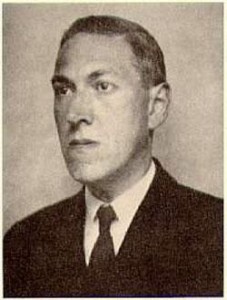H.P. Lovecraft's "Cool Air" and cryonics
 In “Heritage of Horror,” Lovecraft scholar S.T. Joshi writes that Lovecraft’s short story “Cool Air” “anticipates cryogenic research.” We can forgive Joshi the common mistake of writing “cryogenics” when he means “cryonics,” but how much cryonics is there really in Lovecraft’s “Cool Air?”
In “Heritage of Horror,” Lovecraft scholar S.T. Joshi writes that Lovecraft’s short story “Cool Air” “anticipates cryogenic research.” We can forgive Joshi the common mistake of writing “cryogenics” when he means “cryonics,” but how much cryonics is there really in Lovecraft’s “Cool Air?”
“Cool Air” (1926) tells the story of a struggling writer who has secured affordable housing in a converted brownstone on West 14th Street in New York City to devote himself to “dreary and unprofitable magazine work.” Around three weeks pass when an incident in the room above introduces the reader to the character of Dr. Muñoz, whose “complication of maladies” requires an environment of constant cold. When the main character experiences a sudden heart attack, his initial repugnace for the eccentric doctor changes to admiration when Dr. Muñoz is able to offer him relief with a suitable combination of drugs.
Dr. Muñoz, we learn, is the “the bitterest of sworn enemies to death, and had sunk his fortune and lost all his friends in a lifetime of bizarre experiment devoted to its bafflement and extirpation.” He believes that “will and consciousness are stronger than organic life itself, so that if a bodily frame be but originally healthy and carefully preserved, it may through a scientific enhancement of these qualities retain a kind of nervous animation despite the most serious impairments, defects, or even absences in the battery of specific organs.” As the story develops we learn about the doctor’s own (increasing) need for a cold environment to preserve his bodily frame.
Just as in cryonics, Dr. Muñoz employs cold to prevent decomposition. And decreased temperatures confer increased benefits in slowing down the rate of decomposition. In cryonics these benefits of low temperatures are exploited by reducing the temperature of the patient to a point of complete metabolic arrest. At the temperature of liquid nitrogen (-196 degrees Celcius) biological time stands still for all practical purposes.
But what is remarkable about Dr. Muñoz’s approach is that he reaps the metabolic advantages of induced hypothermia without these temperatures preventing his mind from functioning. Dr. Muñoz seems to be unusually “alive” at ultra-profound, or even, high subzero temperatures! Because the EEG of a human brain becomes flat below 20 degrees Celcius, some other process must be involved, perhaps the “incantations of the mediaevalists, since he believed these cryptic formulae to contain rare psychological stimuli which might conceivably have singular effects on the substance of a nervous system from which organic pulsations had fled.”
Unless Dr. Muñoz’s treatment induced profound changes in the body’s biochemistry that allowed it to operate at much lower temperatures, his philosophy of life seems less “materialistic” and coherent than that of Lovecraft’s other enemy of death, Herbert West. Lovecraft never anticipated the practice of cryonics in a systematic fashion, but if Dr. Muñoz and Herbert West could have put their brilliant minds together, the benefits of cold temperatures could have been reaped to induce metabolic arrest in anticipation of future resuscitation of the “dead.”